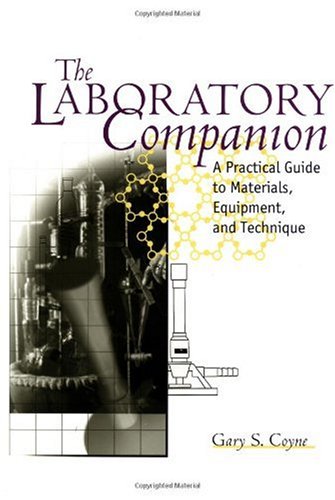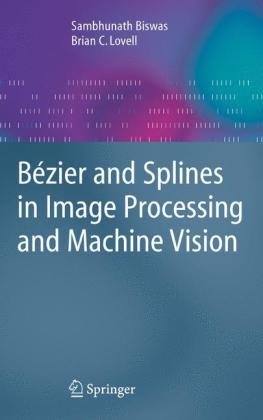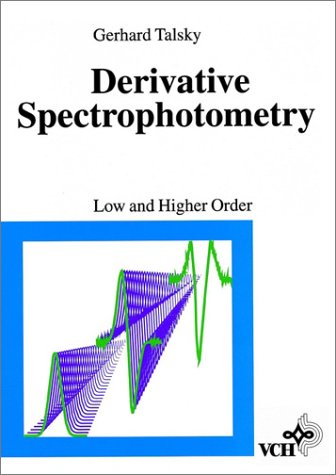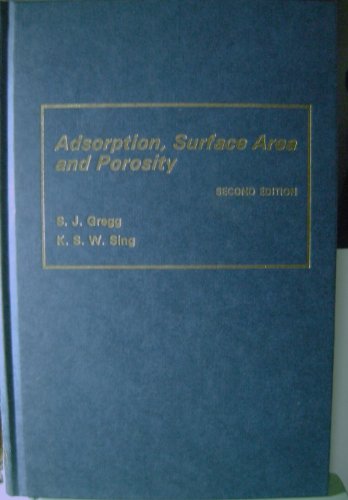Tarmo Anttalainen9781580535007, 1-58053-500-3
This second edition has been thoroughly updated to cover recent market and technological advances that are bringing about the integration of telecom networks and the Internet. It provides the latest on such cutting-edge technologies as dense wave division multiplexing (DWDM), wireless local area networks (WLANs), and GPRS and Bluetooth. What’s more, the book offers a clear explanation of the operation of each Internet protocol. In addition to being an all-in-one reference for networking professionals ranging from sales managers to network engineers, this book is a suitable introduction for students of telecommunications and data communications networking.
Table of contents :
Introduction to Telecommunications
Network Engineering……Page 4
Copyright……Page 5
Contents……Page 6
Preface……Page 16
Acknowledgments……Page 20
1.2 Significance of Telecommunications……Page 22
1.3 Historical Perspective……Page 24
1.4 Standardization……Page 28
1.5 Standards Organizations……Page 30
1.5.1 Interested Parties……Page 31
1.5.3 European Organizations……Page 32
1.5.4 American Organizations……Page 33
1.5.5 Global Organizations……Page 34
1.5.6 Other Organizations……Page 35
1.6 Development of the Telecommunications Business……Page 36
1.7 Problems and Review Questions……Page 38
2.1 Basic Telecommunications Network……Page 40
2.1.2 Switching……Page 41
2.1.3 Signaling……Page 42
2.2.1 Microphone……Page 43
2.2.3 Signaling Functions……Page 44
2.3.1 Setup and Release of a Call……Page 45
2.3.2 Rotary Dialing……Page 46
2.3.3 Tone Dialing……Page 47
2.3.4 Local Loop and 2W/ 4W Circuits……Page 49
2.5 Telephone Numbering……Page 51
2.5.2 Country Code……Page 52
2.5.5 Operator Numbers……Page 53
2.6.1 Telephone Exchange……Page 54
2.6.2 Signaling……Page 55
2.6.3 Switching Hierarchy……Page 58
2.6.4 Telephone Call Routing……Page 59
2.7 Local- Access Network……Page 62
2.7.1 Local Exchange……Page 63
2.7.2 Distribution Frames……Page 64
2.8 Trunk Network……Page 66
2.9 International Network……Page 67
2.10.1 Public Networks……Page 68
2.10.2 Private or Dedicated Networks……Page 72
2.10.3 Virtual Private Networks……Page 73
2.10.4 INs……Page 74
2.10.5 Public Switched Telecommunications Network Today……Page 77
2.11 Network Management……Page 79
2.11.2 Who Manages Networks?……Page 80
2.11.3 DCN……Page 82
2.11.4 TMN……Page 83
2.12.1 Grade of Service……Page 86
2.12.2 Busy Hour……Page 87
2.12.4 Probability of Blocking……Page 88
2.13 Problems and Review Questions……Page 93
3.1 Types of Information and Their Requirements……Page 98
3.2 Simplex, Half- Duplex, and Full- Duplex Communication……Page 101
3.3 Frequency and Bandwidth……Page 102
3.3.1 Frequency……Page 103
3.3.2 Bandwidth……Page 104
3.4.1 Analog and Digital Signals……Page 106
3.4.2 Advantages of Digital Technology……Page 107
3.4.3 Examples of Messages……Page 109
3.5 Analog Signals over Digital Networks……Page 112
3.6.1 Sampling……Page 113
3.6.2 Quantizing……Page 117
3.6.3 Quantizing Noise……Page 118
3.6.4 Nonuniform Quantizing……Page 120
3.6.5 Companding Algorithms and Performance……Page 122
3.6.6 Binary Coding……Page 124
3.6.7 PCM Encoder and Decoder……Page 126
3.7 Other Speech- Coding Methods……Page 127
3.7.2 Differential PCM ( DPCM)……Page 129
3.7.3 DM……Page 130
3.7.4 Adaptive DPCM ( ADPCM)……Page 131
3.7.5 Speech Coding of GSM……Page 133
3.7.6 Summary of Speech- Coding Methods……Page 134
3.8.1 Decibel, Gain, and Loss……Page 136
3.8.2 Power Levels……Page 137
3.8.3 Digital Milliwatt……Page 139
3.9 Problems and Review Questions……Page 140
4.1.1 Elements of a Transmission System……Page 146
4.1.2 Signals and Spectra……Page 148
4.2.2 AM……Page 150
4.2.3 FM……Page 154
4.2.4 PM……Page 156
4.2.5 Allocation of the Electromagnetic Spectrum……Page 159
4.2.6 Free- Space Loss of Radio Waves……Page 162
4.2.7 Antennas……Page 164
4.3.1 Symbol Rate ( Baud Rate) and Bandwidth……Page 165
4.3.2 Symbol Rate and Bit Rate……Page 167
4.3.3 Maximum Capacity of a Transmission Channel……Page 169
4.4 Coding……Page 172
4.4.1 Purpose of Line Coding……Page 173
4.4.2 Spectrum of Common Line Codes……Page 174
4.5 Regeneration……Page 176
4.6.1 Frequency- Division Multiplexing ( FDM) and TDM……Page 179
4.6.2 PCM Frame Structure……Page 180
4.6.3 Plesiochronous Transmission Hierarchy……Page 185
4.6.4 SDH and SONET……Page 187
4.7.1 Copper Cables……Page 191
4.7.2 Optical Fiber Cables……Page 193
4.7.4 Satellite Transmission……Page 196
4.8 Transmission Equipment in the Network……Page 197
4.8.3 Add/ Drop Multiplexers……Page 198
4.8.6 Optical Line Systems……Page 199
4.8.7 WDM……Page 200
4.8.8 Optical Amplifiers……Page 202
4.8.9 Microwave Relay Systems……Page 203
4.9 Problems and Review Questions……Page 204
5 Mobile Communications……Page 210
5.1 Cellular Radio Principles……Page 211
5.2.1 Cellular Structure……Page 212
5.2.2 HLR and VLR……Page 213
5.2.3 Radio Channels……Page 214
5.3.1 MS in Idle Mode……Page 215
5.3.2 Outgoing Call……Page 216
5.3.5 MS Transmitting Power……Page 217
5.4.1 Cordless Telephones……Page 218
5.4.2 Professional or Private Mobile Radio ( PMR)……Page 219
5.4.3 Radio Paging……Page 223
5.4.5 Digital Second Generation Cellular Systems……Page 224
5.4.6 Third Generation Cellular Systems……Page 229
5.4.7 Mobile Satellite Systems……Page 230
5.4.8 WLANs……Page 231
5.4.9 Bluetooth……Page 232
5.5.1 Structure of the GSM Network……Page 233
5.5.2 Physical Channels……Page 238
5.5.3 Logical Channels……Page 239
5.6.1 Location Update……Page 240
5.6.2 Mobile Call……Page 242
5.6.3 Handover or Handoff……Page 244
5.6.4 GSM Security Functions……Page 246
5.6.5 GSM Enhanced Data Services……Page 248
5.7 GPRS……Page 249
5.7.1 GPRS Network Structure……Page 250
5.7.2 GPRS Network Elements……Page 251
5.7.3 Operation of GPRS……Page 253
5.8 Problems and Review Questions……Page 254
6.1 Principles of Data Communications……Page 258
6.1.2 Serial and Parallel Data Communications……Page 259
6.1.3 Asynchronous and Synchronous Data Transmission……Page 260
6.2 Circuit and Packet Switching……Page 263
6.2.2 Packet Switching……Page 264
6.2.4 Switching and Routing Through Virtual Circuits……Page 266
6.2.5 Polling……Page 267
6.3.1 Protocol Hierarchies……Page 269
6.3.2 Purpose and Value of Layering……Page 271
6.3.3 Open Systems Interconnection ( OSI)……Page 272
6.3.5 Data Flow Through a Protocol Stack……Page 281
6.4.1 Voice- Band Modems……Page 283
6.4.2 ISDN……Page 289
6.4.3 DSL……Page 290
6.4.4 Cable TV Networks……Page 298
6.4.5 Wireless Access……Page 300
6.4.7 Leased Lines and WANs……Page 301
6.5 LANs……Page 302
6.5.1 LAN Technologies and Network Topologies……Page 303
6.5.3 CSMA/ CD Network Structure……Page 305
6.5.4 Frame Structure of the Ethernet……Page 306
6.5.5 CSMA/ CD Collision Detection……Page 309
6.5.6 Twisted- Pair Ethernet……Page 313
6.5.7 Switched Ethernet Switches and Bridges……Page 315
6.5.8 Fast Ethernet……Page 317
6.5.9 Autonegotiation……Page 318
6.5.10 Gigabit Ethernet……Page 319
6.5.11 Upgrade Path of the Ethernet Network……Page 320
6.5.12 Virtual LAN……Page 321
6.6.1 Development of the Internet……Page 322
6.6.2 Protocols Used in the Internet……Page 323
6.6.3 Bearer Network Protocols for IP……Page 326
6.6.4 Internet Protocol……Page 327
6.6.5 Address Resolution Protocol……Page 336
6.6.6 Routing Protocols……Page 337
6.6.7 ICMP……Page 338
6.6.8 Structure of Internet and IP Routing……Page 339
6.6.9 Host- to- Host Protocols……Page 340
6.6.10 Application Layer Protocols……Page 348
6.6.11 WWW……Page 352
6.6.12 Voice over IP ( VoIP)……Page 358
6.6.13 Summary……Page 362
6.8 ATM……Page 363
6.8.1 Protocol Layers of ATM……Page 364
6.8.2 Cell Structure of ATM……Page 365
6.8.3 Physical Layer of ATM……Page 367
6.8.4 Switching of ATM Cells……Page 368
6.8.5 Service Classes and Adaptation Layer……Page 369
6.9 Problems and Review Questions……Page 371
7.1 Information Networks……Page 378
7.3 Wireless Communications……Page 379
7.5 Digital Broadcast Systems……Page 380
7.6 Summary……Page 381
About the Author……Page 382
Index……Page 384







Reviews
There are no reviews yet.